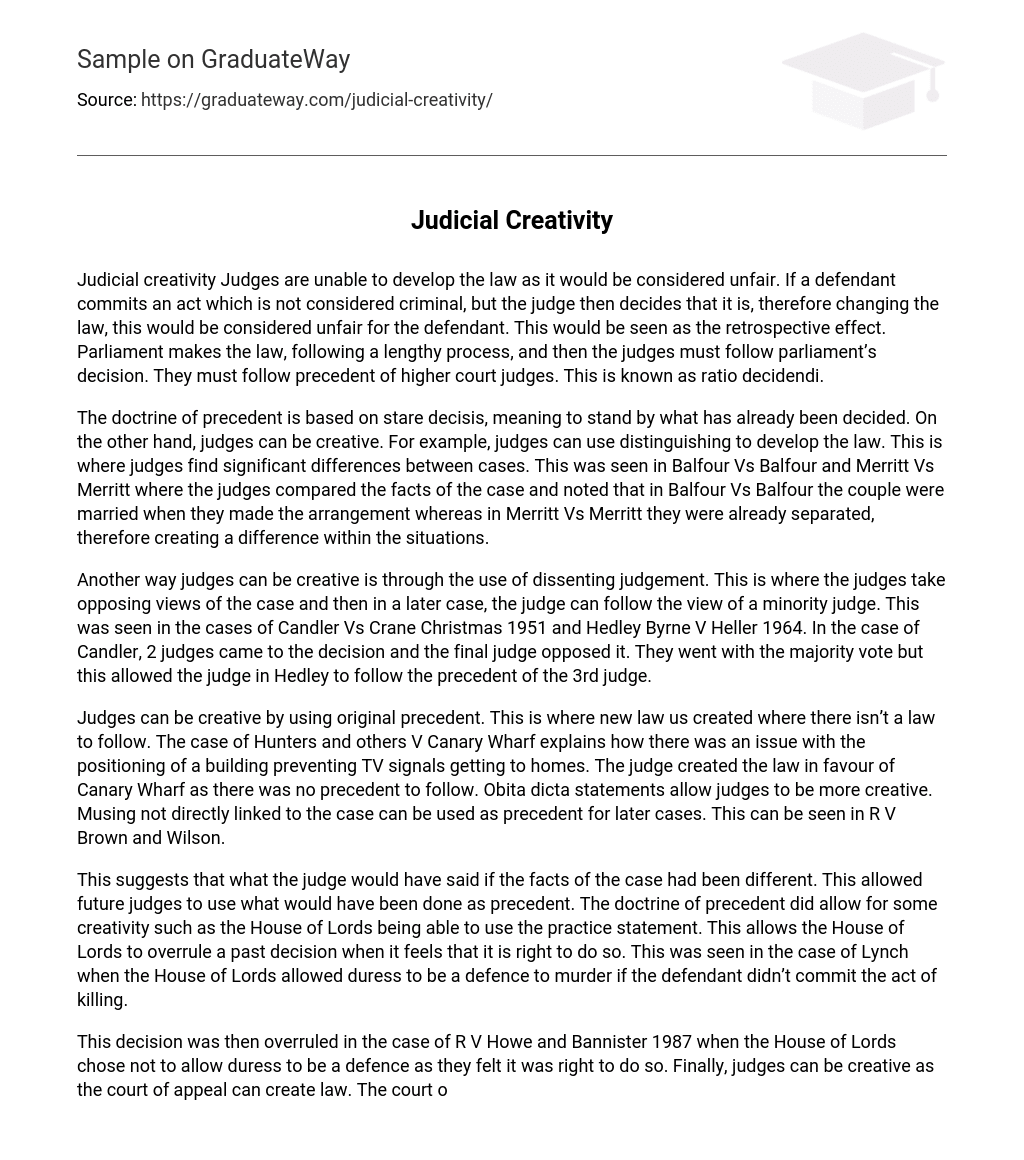Judicial creativity Judges are unable to develop the law as it would be considered unfair. If a defendant commits an act which is not considered criminal, but the judge then decides that it is, therefore changing the law, this would be considered unfair for the defendant. This would be seen as the retrospective effect. Parliament makes the law, following a lengthy process, and then the judges must follow parliament’s decision. They must follow precedent of higher court judges. This is known as ratio decidendi.
The doctrine of precedent is based on stare decisis, meaning to stand by what has already been decided. On the other hand, judges can be creative. For example, judges can use distinguishing to develop the law. This is where judges find significant differences between cases. This was seen in Balfour Vs Balfour and Merritt Vs Merritt where the judges compared the facts of the case and noted that in Balfour Vs Balfour the couple were married when they made the arrangement whereas in Merritt Vs Merritt they were already separated, therefore creating a difference within the situations.
Another way judges can be creative is through the use of dissenting judgement. This is where the judges take opposing views of the case and then in a later case, the judge can follow the view of a minority judge. This was seen in the cases of Candler Vs Crane Christmas 1951 and Hedley Byrne V Heller 1964. In the case of Candler, 2 judges came to the decision and the final judge opposed it. They went with the majority vote but this allowed the judge in Hedley to follow the precedent of the 3rd judge.
Judges can be creative by using original precedent. This is where new law us created where there isn’t a law to follow. The case of Hunters and others V Canary Wharf explains how there was an issue with the positioning of a building preventing TV signals getting to homes. The judge created the law in favour of Canary Wharf as there was no precedent to follow. Obita dicta statements allow judges to be more creative. Musing not directly linked to the case can be used as precedent for later cases. This can be seen in R V Brown and Wilson.
This suggests that what the judge would have said if the facts of the case had been different. This allowed future judges to use what would have been done as precedent. The doctrine of precedent did allow for some creativity such as the House of Lords being able to use the practice statement. This allows the House of Lords to overrule a past decision when it feels that it is right to do so. This was seen in the case of Lynch when the House of Lords allowed duress to be a defence to murder if the defendant didn’t commit the act of killing.
This decision was then overruled in the case of R V Howe and Bannister 1987 when the House of Lords chose not to allow duress to be a defence as they felt it was right to do so. Finally, judges can be creative as the court of appeal can create law. The court of appeal must follow its own precedent except for conflicting decisions from the past, when following decisions from the supreme court or House of Lords, when the decision was made by mistake, per incuriam ( as seen in the rent dispute in Rakhit V Carty) and finally the criminal division only; when a past decision was misapplied or misunderstood.





